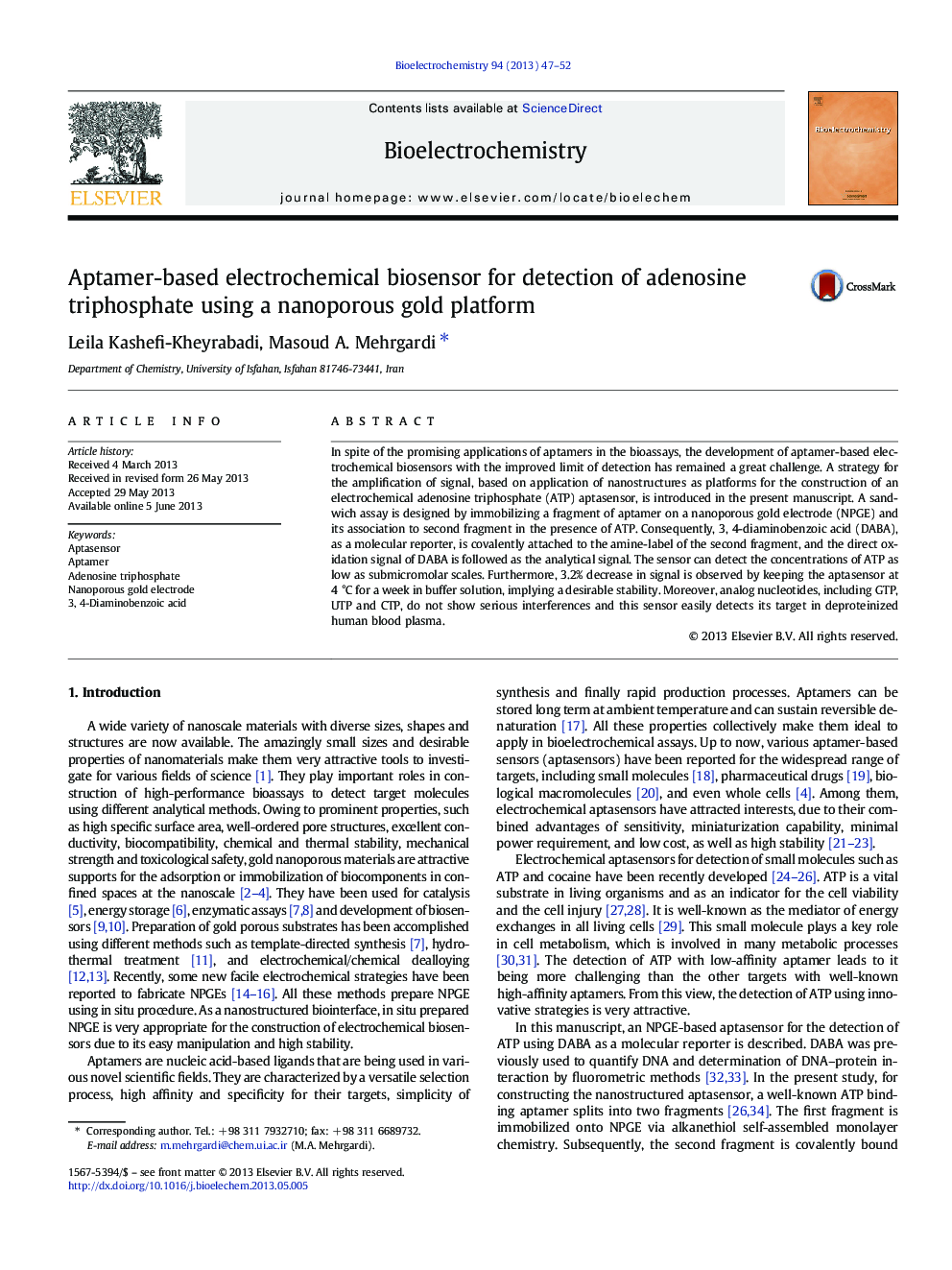| Article ID | Journal | Published Year | Pages | File Type |
|---|---|---|---|---|
| 1271241 | Bioelectrochemistry | 2013 | 6 Pages |
•Application of gold nanoporous platforms for the construction of aptasensors is described.•Nanostructure platforms enhance the detection sensitivity of aptasensors.•The aptasensor can detect the concentrations of ATP at sub-micromolar scales.•Very selective response of aptasensor to ATP against the ATP analogs
In spite of the promising applications of aptamers in the bioassays, the development of aptamer-based electrochemical biosensors with the improved limit of detection has remained a great challenge. A strategy for the amplification of signal, based on application of nanostructures as platforms for the construction of an electrochemical adenosine triphosphate (ATP) aptasensor, is introduced in the present manuscript. A sandwich assay is designed by immobilizing a fragment of aptamer on a nanoporous gold electrode (NPGE) and its association to second fragment in the presence of ATP. Consequently, 3, 4-diaminobenzoic acid (DABA), as a molecular reporter, is covalently attached to the amine-label of the second fragment, and the direct oxidation signal of DABA is followed as the analytical signal. The sensor can detect the concentrations of ATP as low as submicromolar scales. Furthermore, 3.2% decrease in signal is observed by keeping the aptasensor at 4 °C for a week in buffer solution, implying a desirable stability. Moreover, analog nucleotides, including GTP, UTP and CTP, do not show serious interferences and this sensor easily detects its target in deproteinized human blood plasma.
